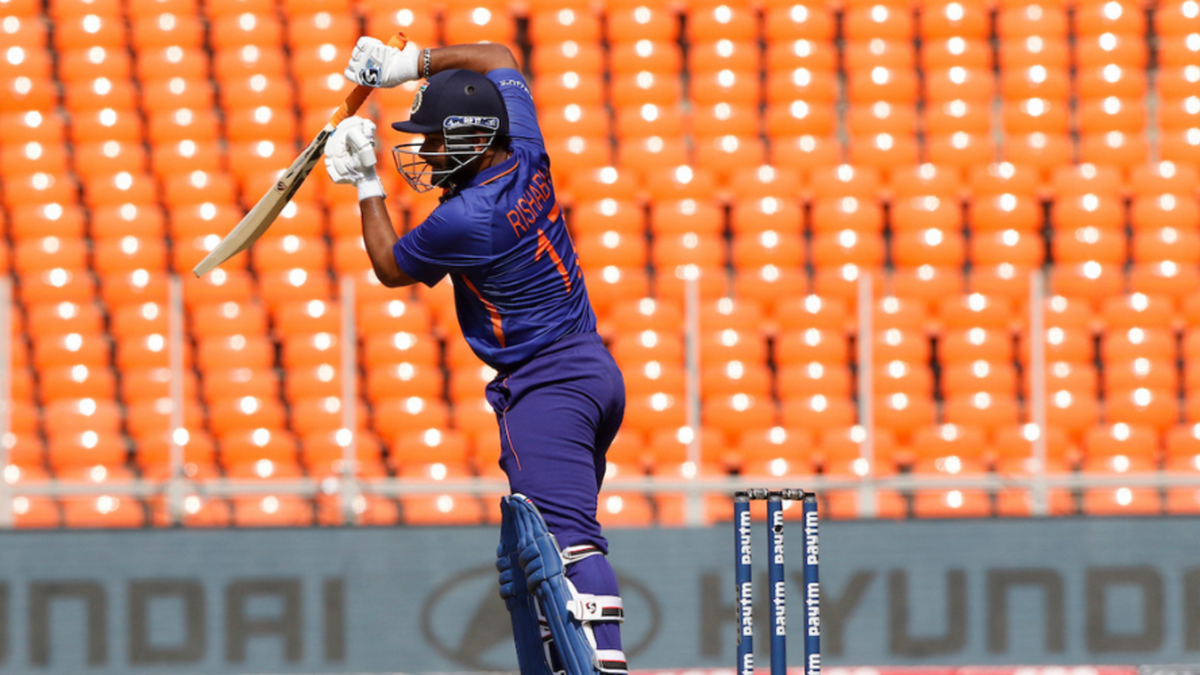
The India team sprung a surprise when they unleashed Rishabh Pant to open the innings alongside Rohit Sharma in the second ODI against West Indies despite the presence of KL Rahul in the XI.
The wicketkeeper has played at the top of the order on 11 occasions in Under-19 ODIs, scoring 454 runs at an average of 41.27 and a strike rate of 110.46. However, he was asked to open for the first time for the senior team at Ahmedabad, with Rahul pushed down to four.
However, the move seems a one-off for various reasons.
The unavailability of Shikhar Dhawan and Ruturaj Gaikwad
That India have a rich resource of openers is well known. The unavailability of Dhawan and Gaikwad due to Covid-19 and the absence of KL Rahul in the first ODI after the player opted for rest, saw the team call up Mayank Agarwal and Ishan Kishan as back-ups. The latter opened in the first ODI, scoring 28.
However, with Rahul returning for the second match, Kishan was always expected to make way, leaving India to go back to their T20I opening pair of Rohit Sharma and Rahul. However, the latter has been identified as a potential middle-order batter for the 2023 World Cup, and with limited ODIs ahead of the tournament, the team decided to give ample opportunities to Rahul to acclimatize himself to the demands of batting lower down the order.
India’s first-choice XI for the second ODI considering all the options available, thus, had no opener who could bat alongside Rohit. They could have dropped Deepak Hooda, who made his debut in the last game, to accommodate both Kishan and Rahul, but the Baroda all-rounder played a calm knock of 26* in 32 to take the team home. Acknowledging that Hooda deserved a longer rope, the hosts went ahead and experimented with Pant at the top, which also helped them keep the right hand-left hand combination going.
Why was KL Rahul not considered to open?
Hardik Pandya’s injury concerns have further added to India’s middle-order woes. A lack of consistent showings from numbers four and five in the past meant that the side often struggled to get going after the openers had put on a consistent show, or struggled to recover on the rare occasions of a top-three failure. Eighteen players have batted between numbers four and seven for India since the 2019 Cricket World Cup, and the pertinent issue seems to have finally come to an end, with Shreyas Iyer locked in at four, and the side deciding on Rahul at five considering his impressive performances at the spot.
At number five, Rahul has an average of 56.62, in contrast to the average of 46.52 at the top of the order. His strike rate of 80.58 while opening increases to 113.81 at five, which is also a position where he has scored one hundred and four fifties in 10 innings.
India’s rich opening pool allows a number of replacements in case an opener is unfit: besides Rohit, Gaikwad, Dhawan and Kishan, there’s Mayank, Prithvi Shaw and Shubman Gill as well. India are struggling to find reliable middle-order options, and with Rahul having done well in the role in the past, it seems that India are finally done hunting. Pant’s promotion to open, thus, had more to do with the fact that they want Rahul to settle in and adjust to his changed role ahead of the tournament, than with a rogue new new-ball option presenting itself, as fun as that may be.








